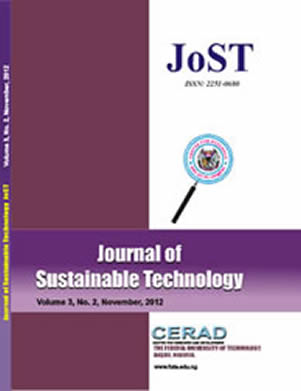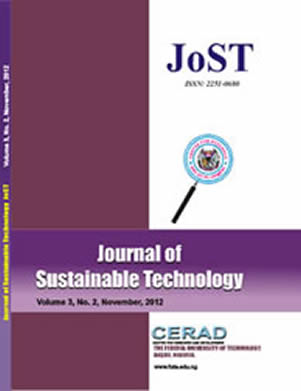This study assessed the nutritive potential of Eichhornia crassipes, Nymphaea lotus and Nymphaea maculata as feeds for ruminants. These plants are menace to water ways and fishing activities along rivers: Niger-Benue located at Lokoja (Kogi State), Igbokoda riverine area of Ondo State and Agunla stream in Ipetu-Ijesa, Osun State, Nigeria respectively. The methodology involved are chemical characterization and in vitro gas production. The results indicated that species difference was significant (p<0.05) with regard to dry matter (DM), crude protein (CP), crude fibre (CF), neutral detergent fibre (NDF), acid detergent fibre (ADF) and cellulose compositions. Dry matter values ranged from 88.46% in N. lotus to 94.15% in E. crassipes, while gross energy (GE) values ranged between 15,14 KJ/100gDM (N.lotus) and 16.88 KJ/100gDM (N. maculata). Also, CF (15.08%) and NFE (55.61%) values were higher in N. lotus and N. maculata respectively. NDF, ADF and cellulose contents varied among the plants. Species difference was significant (p<0.05) for all minerals measured except calcium and magnesium. Values of alkaloid, saponin, oxalate, tannin and phenol were least in E. crassipes (p<0.05). The total gas and methane production, metabolizable energy (ME), short chain fatty acids (SCFA) and organic matter digestibility (OMD) values were similar (p>0.05). However, least values of methane (6.00ml), OMD (44.88%) and total gas production (11.00ml) were observed in E. crassipes, N. maculata and E. crassipes respectively, while the highest value of SCFA (0.18µmol) was observed in N. maculata. It could be concluded that from the basic data that the selected aquatic plants have potential as alternative feed resources for ruminants.
PAPER TITLE :PRELIMINARY STUDIES ON THE NUTRITIVE POTENTIALS OF SOME AQUATIC WEEDS AS FEEDSTUFFS FOR SMALL RUMINA
JOURNAL Of SUSTAINABLE TECHNOLOGY | VOLUME 3 NUMBER 2 2012
Paper Details
- Author(s) : FAJEMISIN, A.N. FADIYIMU, A.A. and ENIOLORUNDA, O.O
- Abstract:



